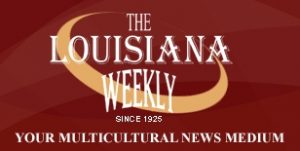DTU JOURNAL ENTRY 1: DETROIT WAS MORE THAN I EXPECTED


Tiana Hunt (NNPA/DTU Journalism Fellow, The Louisiana Weekly)
When I first arrived in Detroit, Michigan for the “Discover The Unexpected” Journalism Fellowship program’s Immersion event, I didn’t know what to expect. I have heard so many negative things about the city. I was hoping that I would stay somewhere safe, quiet and clean.
I flew from Houston to Detroit on Delta Airlines. I caught an Uber from the airport to my hotel and then I met up with the rest of the fellows and staffers from the NNPA, Chevrolet and General Motors (GM) at a design studio owned by Ed Welburn, the former vice president of Global Design at GM.
We learned more about the NNPA, the DTU journalism program and the Chevrolet Equinox. I also had time to get to know the other seven fellows from Clark Atlanta University, Spelman College, Morehouse College and Howard University.
After lunch and few remarks by Dr. Benjamin F. Chavis, the president and CEO of the NNPA, Michelle Alexander, the diversity marketing manager from Chevrolet and Jamilah Lemieux, the DTU road trip navigator, all of the fellows were paired up for a scavenger hunt that involved a few well-known businesses in Detroit. I was paired up with Ayron Lewallen from Morehouse. We even got to drive the 2018 Chevrolet Equinox.
After visiting Dilla’s Delights, N’Namdi Center for Contemporary Art and Detroit vs. Everybody, the last stop on the scavenger hunt was the Charles H. Wright Museum of African American History. Our museum guide was exquisite, honest and authentic. He reinforced the fact that if we don’t teach our children about the rich history and the incredible natural resources found in Africa, they could grow up with the same misfortune of having a distorted perception of the continent. At the museum, we were able to see images of Benin, the Royal Palace of the Oba, “The Capture,” “The Long March,” the Middle Passage and the slave trade. We learned that a griot is a person that has the honor of maintaining the history of their people; the history is kept in their heads; it’s a spoken history. The museum guide told us that if that person is captured and removed from their community, all of the history of that culture could be lost. We viewed replicas of slave forts and slave dungeons. In the slave dungeon, the slaves were there for weeks or months; it all depended on how long it took the slavers to capture enough Africans for their cargo.
Where the slaves were chained up in the dungeons, there were no bathrooms, so the Africans were forced to defecate and urinate where they slept and ate. Then, it was the door of no return; the Africans were shackled together on the ships. When, we entered the “Belly of the Beast,” we saw Africans chained up laying on top of each other, we heard simulated sounds of ship creaking and waves crashing. We also heard the screams of the mothers, daughters, fathers and sons crying out in excruciating pain and agony. The slavers violated the men, women and children in the worst ways imaginable. When they emerged on the other side, in North America, they were sold into slavery. When our group emerged from the “Belly of the Beast,” there was a visible change in everyone’s moods. Some of the DTU fellows wept openly. It was truly an honor and a privilege to learn about the history of Africans before slavery, while they were enslaved and how they fought to regain their freedom.
I am completely thankful for this opportunity that the NNPA and Chevrolet has given me to work for the Black Press this summer.
Tiana Hunt is a 2017 NNPA “Discover The Unexpected” Journalism Fellow and a recent graduate of Clark Atlanta University. This summer, Tiana is writing for The Louisiana Weekly, a member newspaper of the NNPA. Follow Tiana on Twitter @TianaTaughtYa.

Tiana Hunt
Fellow, The Louisiana Weekly

